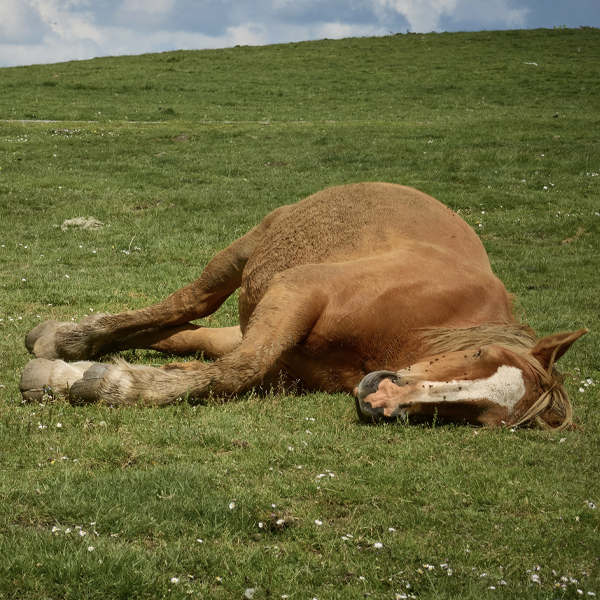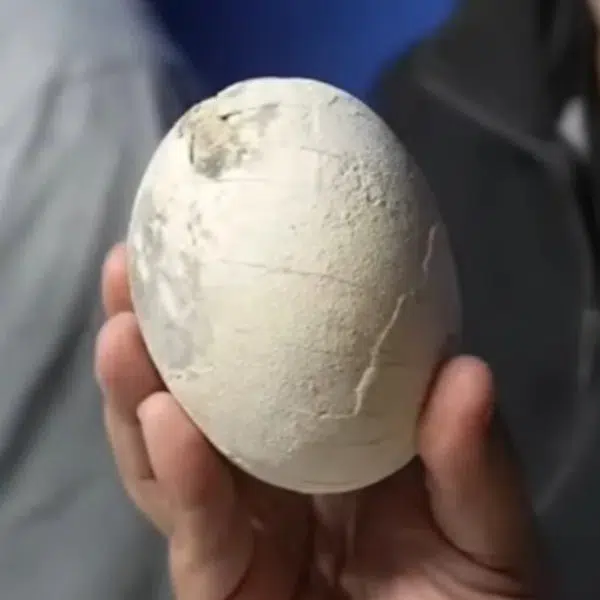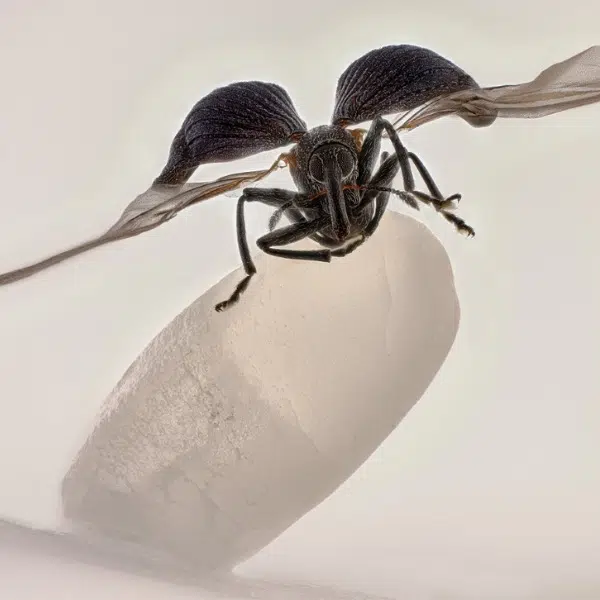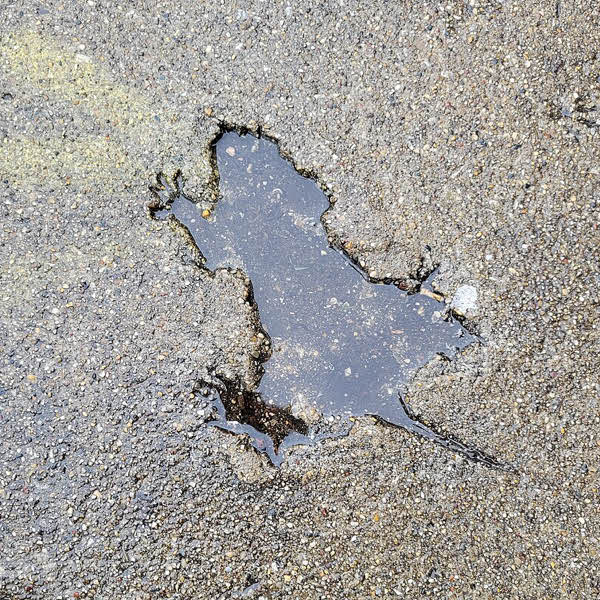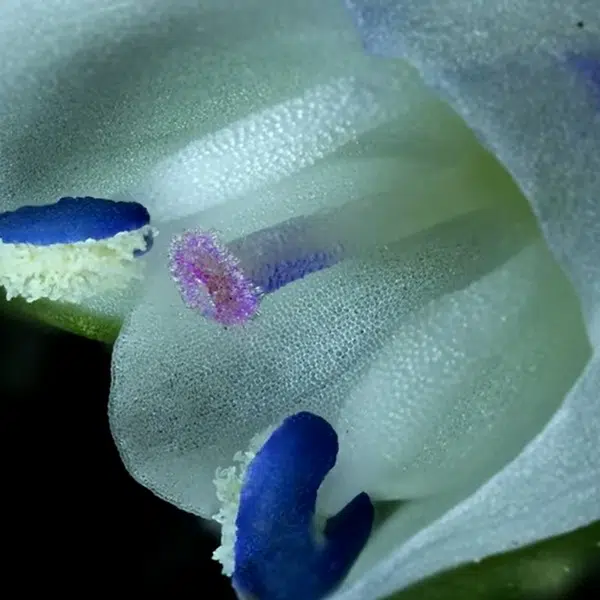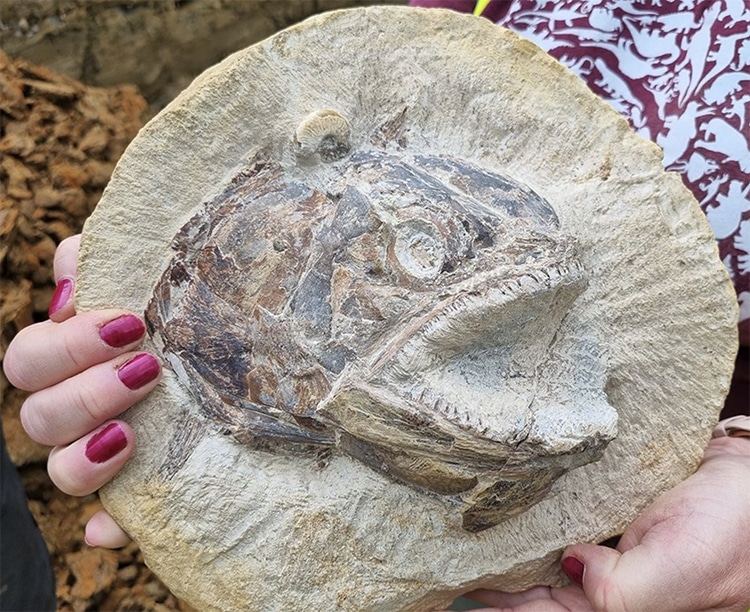
The Pachycormus fossile. (Photo: Dr. Dean Lomax)
One might expect to find a lot of cows, manure, and hay on a dairy farm. However, British fossil hunters Neville and Sally Hollingworth discovered something less expected: a 183-million-year-old fossilized fish. Not just any fossil, the pair had discovered a specimen preserved as if leaping, toothy mouth agape, towards the viewer. Researchers investigating this 3D find have since uncovered a previously unknown Jurassic fossil bed, one of the most exceptional sites discovered in years.
The Hollingworths are known for finding fossils, including mammoth skeletons. “It was a real surprise because, when you find fossils, most of the time they've been pressed flat through pressure over time,” Neville said. “But when we prepared this one, to reveal its bones bit by bit, it was amazing because we suddenly realized its skull was uncrushed.” The ferocious fossil had emerged from a chunk of limestone which was eroding on a dairy farm in the village of Kings Stanley, Gloucestershire, England.
The surprised farmer gave the pair and a team of researchers from the University of Manchester permission to dig on his property. The crew carefully excavated more limestone nodules, cracking them open to expose more marine fossils. Fish, squid, and the bones of two ichthyosaurs appeared. The latter were large, dolphin-like reptiles that roamed ancient seas. Some of the fish even have preserved soft tissue such as skin, giving the fossils a surprisingly lifelike appearance. Fossilized wood and insects suggest the ancient waters were not far from land.
“We've got the whole food chain,” paleontologist Dr. Dean Lomax, said. “So this Pachycormus would have been eating the smaller fish and squids. And then, the ichthyosaurs would have been eating the Pachycormus.” Continuing, “These sites tell you there are still many nationally and indeed internationally significant fossil discoveries yet to be made in the UK.”
The Hollingworths compared the find to other historic discoveries.”The last comparable exposure like this was the so-called Strawberry Bank Lagerstätte, in Somerset, in the 1800s—that got built over,” Sally said. “The Court Farm site allows scientists to do modern research with fresh, in-situ material.” Excavated fossils will be exhibited locally for all to see.
British fossil hunters discovered a Jurassic fish fossil on a cow farm.
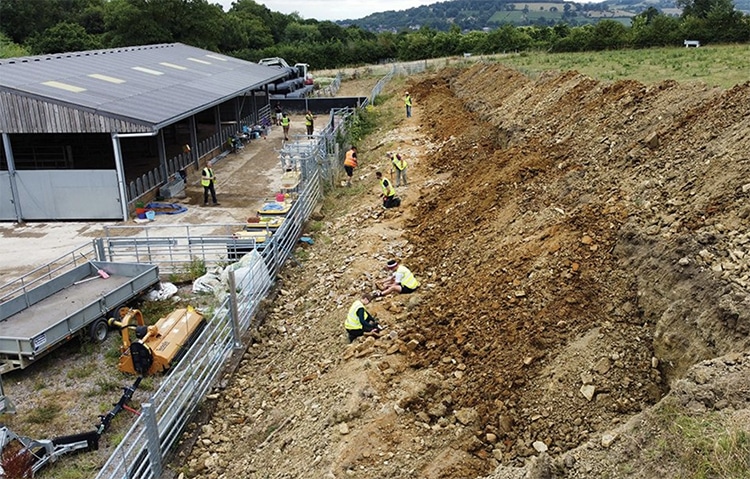
The farm in Gloucestershire where the fossil trove was discovered. (Photo: Steve Dey)
Researchers were able to uncover one of the richest fossil beds discovered in decades.
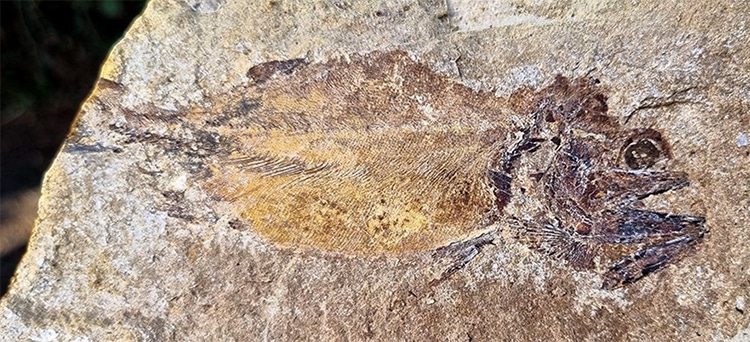
Another fossilized fish complete with soft tissue. (Photo: Dr. Dean Lomax)
Some of the marine fossils are even preserved with soft tissue such as skin and eyes.

A 3D digital model of the fossil. (Photo: Steven Day/Thinksee3D)
h/t: [IFL Science, BBC]
Related Articles:
Art History: Ancient Practice of Textile Art and How It Continues to Reinvent Itself
Sister Duo Weaves Textured Wall Hangings Inspired by Australian Landscapes
How to Crochet: Learn the Basics of This Time Honored Handicraft
Artist Fills Forest with Life-Size Sculptures Made from Woven Rods of Willow












































































